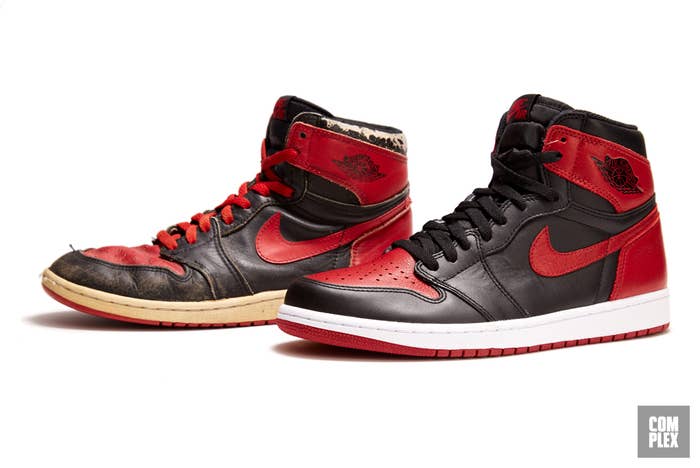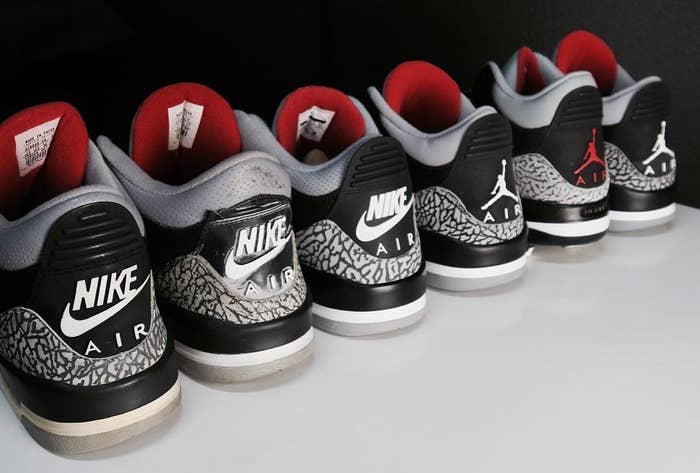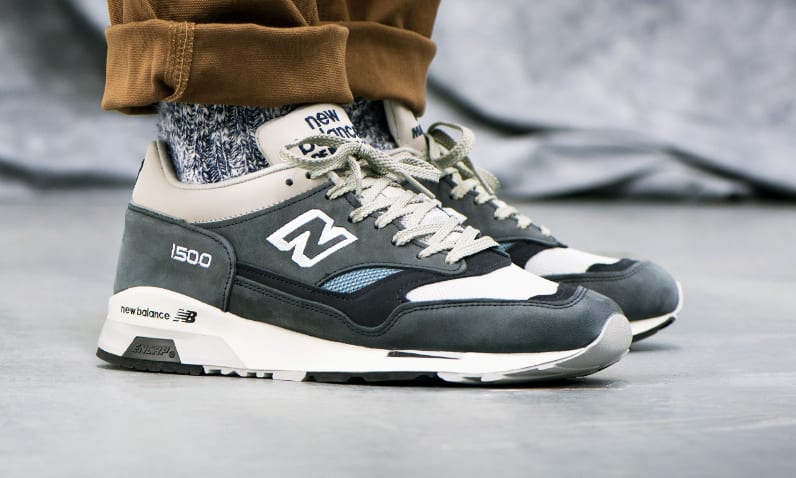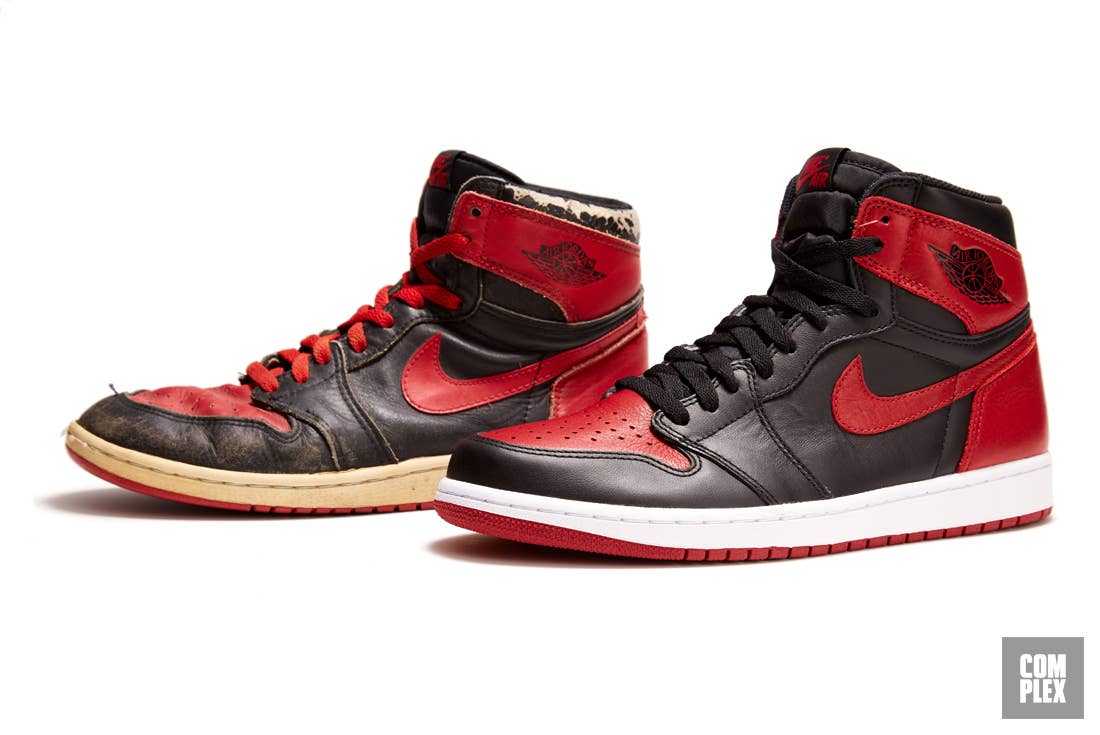
One of the most scrutinized jobs in the footwear industry belongs to whoever’s in charge of creating a brand’s retro sneakers. Here’s a short list of everything they can get wrong in their attempt to recreate a shoe from the past: The shape is wrong, the color is off, the logos and branding don’t match the original, the materials aren’t the same quality, and there’s glue stains on the sneakers. That’s just a fraction of the mistakes that can occur when a company tries to bring back a shoe from the ‘70s, ‘80s, ‘90s, and even now the 2000s. There are a whole host of reasons why this can happen. Sneaker connoisseurs don’t want to hear it, but retroing a shoe isn’t just as easy as finding the original, bringing it to a factory, and, with a snap of their fingers, getting a brand-spanking-new version of the shoes you wore in second grade.
In order to create a retro shoe, a few things are necessary. Having an original version of the shoe is going to be helpful. Working off pictures alone is extremely tough and guarantees failure, but being in possession of the shoe that’s being remade isn’t enough. Having the original last, or the mold the upper is built from, is vital. If a retro doesn’t look right, it’s probably because it wasn’t built from the same tools as its predecessor. Then you need to consider if the company has the molds for the sole, which is the most expensive part of shoemaking, and access to the copyrights around the shoe’s name. If it’s named after an athlete who’s no longer signed to the brand or a word that belongs to someone else, good luck.
There’s a lot at stake when it comes to retros. Depending on the company, retro product could make up the majority of their business. Get the retro right, and they’ll fly off the shelves. Get it wrong? And they’ll sit there forever, get marked down, and be slandered all over the Internet.
No company is judged more by its accuracy of recreating old sneakers than Jordan Brand. Fanatics of the brand can tell the differences, in great detail, from shoes releases in the '80s, '90s, 2000s, and today. The brand’s obsession with perfection caused it go back to the basics in 2015 with its "Remastered" program, which put more emphasis on the quality and accuracy of its retros. It raised the prices of the sneakers, too.

"We have teams in material design, color design, footwear design just obsessing details,” says Jordan Brand VP of design David Creech. “As they work on new versions, they're always obsessing about how true it is to the past and asking, 'Is it the right quality for where we need to be?'"
Jordan isn’t the only company with a foot deep in the retro industry. Adidas has Adidas Originals, which is the lifestyle branch of the German sportswear company that first launched in 2001. Shoes such as the Stan Smith, Superstar, Gazelle, and Campus are the backbone of the line, and it’s gone on to also be the home of the brand’s artist collaborations that include Kanye West and Pharrell Williams. It was reported in 2015, thanks in part to Pharrell, that the sales of the Superstar and Stan Smith rose 45 percent. One person that’s been involved with Adidas in multiple capacities since the birth of Originals is Gary Aspden. He currently runs the Spezial line, which recreates shoes from the ‘70s and ‘80s and makes sneakers that are inspired by traces of models from those eras.
Aspden’s own obsession with retroing shoes is drawn from his upbringing in the North West of England and life as an Adidas collector, and it’s brought as far away as Japan and Argentina to find obscure versions of Adidas shoes to help aide his process.
“When you do a one-to-one [retro], you’re always going to be measured against the original shoe,” he says. “When I first joined Adidas in the ‘90s, there were still countries that were making sneakers under license. Those licensing companies were making the shoes themselves, in places like Romania or Yugoslavia or Argentina, in their own factories, and when they were bought back by Adidas — they’ve all been bought back by Adidas — the lasts were destroyed.”

When making his retro shoes, the process gets much more complicated. As already stated, there are a lot of hurdles to overcome to make a shoe. It’s imperative to remember that creating retros, although a passion project for many, is still about making money for brands. That requires a lot of things to consider.
“So first of all: Does the tooling exist? If you’re going to do a small set of something, you can’t create a whole new set of molds for a few thousand shoes. If you’re going to create new molds, you need to get the money back on them to justify the tooling creation,” Aspden says. “Then, can you get the right last? Then there’s a whole minefield of things. For example: the standard testing we have now is different than the standard testing we had back then. The dyes they used in the 1980s were not ecologically friendly. The color migration. When we did the Atlanta shoe, we had to put a tag on the shoe as a disclaimer, so we don’t get people contacting Adidas’ customer service about the fact his socks turned red.”
New Balance is another brand that relies heavily on making retros. The brand’s following around the shoes, although smaller than Adidas, is equally as passionate. There have even been petitions started to change the shape on retro shoes such as the 1500. The brand’s manufacturing procedures and research is just as diligent as Adidas, or maybe even more so, and much controllable: a lot of its shoes are made locally in factories in the USA and UK. “Usually it's down to the last shape,” says Mark Godfrey, the creative design manager for Europe. “If you don't have the correct last, it's never going to look right no matter how many times you revise the upper. Brands also often reissue shoes with inferior materials compared to the original, and that quickly turns away fans of the OGs. It’s really a disservice to the original design.”

Godfrey admits that retros that aren’t a 100 percent recreation of the original are usually due to the brand wanting to make it less expensive. He also thinks it’s tough to capture the spirit of a lot of older shoes due to how much shoemaking has changed over the years. “The hardest thing is creating something that looks the same when the manufacturing techniques are now quite different,” he says. “Modern day manufacturing often relies on factory efficiency and automated production. As odd as it might sound, modern production is very precise and clinical, often the heart and soul of old shoes is in the imperfections and the hand work.”
He says that it takes six months to rebuild the sneaker and another six months to get it ready for production.
Old shoes aren’t always better than the ones made today. People often point at glue stains on uppers and stitching errors to prove that things really were better way back when, but Aspden says that’s often propagated by those who either don’t own the first released versions or weren’t around back then. “One of the biggest myths, though, is that they were so much better made back then,” he says. “[People say], ‘Look at these [new] shoes, they’ve got glue marks on them.’ The first thing about making shoes: Attaching an upper to a midsole, there’s likely going to be some glue on it. And if you don’t get glue marks, there might not be enough glue on it. I think people would complain more about their shoes falling apart. People go on about glue marks. I have about 1,800 pairs of vintage Adidas trainers. About 95 percent of them have glue marks on them. The idea that they weren’t made like that [back then] become Internet myths.”
Fans of retro shoes need to realize, though, that companies are never going to 100 percent make the new versions of old shoes the exact same way as in the ‘80s and ‘90s. Those sneakers were made for performance athletes. Now they’re created for people to walk on the street and post on Instagram. As Aspden puts it, “You can try to get it as close as possible [to the original], but sometimes it’s not realistic. Because they were performance shoes [back then], Adidas invested everything into them. With reissued shoes, you’re not producing these for sports performance. They’re made for lifestyle purposes. The consideration of what resources are put into it are going to be different.”

